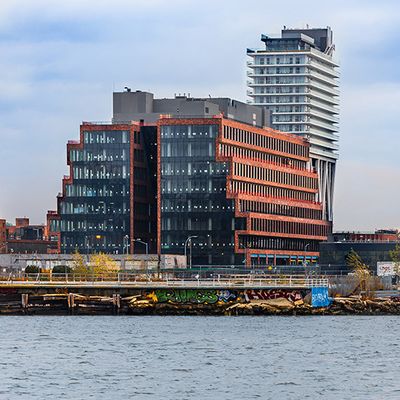
If an instrument could measure the level of New Yorkers’ complaints about their city, it would probably register a constant, four-century roar, increasing with the population. Vocal discontent is an unreliable indicator of how we actually live. Say, then, that a computer could grind through the city’s history, compiling photographs, newspapers, art, and piles of data into a quotient that measured the richness of urban life. When, precisely would that number have peaked? In 1999, when crime had plummeted from its peak a decade earlier, but the words “Times Square” were regularly hitched to “Disneyfied”? In 1979, when the city had emptied out into the suburbs but a rebellious creativity broke out amid broken glass and empty lots? In 1959, when the middle class took center stage, but black neighborhoods were being bulldozed for the sake of opera and ballet? In every era, some people’s vision of the future conflicts with another group’s experience of the present, and with a third cohort’s nostalgia: You should have seen it back when ... But maybe if you could run all those waves of happiness and discontent through a wisely formulated (aye, there’s the rub) algorithm, you could determine on which date New York was at its finest, and what made it that way. Wouldn’t it be shocking to discover that that the peak is actually today?
History is a useful tool in contemplating the city’s future, because it grounds the imagination and gives life to statistics. It would be especially helpful now, as we try to understand the lessons from the Battle of Amazon. In theory, the arguments over whether the company should put down roots in Long Island City, and the government should help them do it, was a contest of predictions about whether life would get better or not. The mayor and the governor pinned their plan to numbers: a $3 billion payout now would yield $27 billion later. Opponents, disbelieving the math, responded with a fusillade of dire prognostications: a leech-like corporation would displace residents, bust unions, erode democracy, and break the subways. New York would become a city where so many want to live that nobody actually can.
Pro-Amazon forces responded with their own set of warnings: rejecting the deal would mean giving up on the dream of becoming a tech capital, signal that the city’s doors were swinging shut, and scare away businesses large and small. Tax revenues would plummet, and pretty soon, your local branch library would have to curtail its hours.
It was always too much to ask that we rationally assess the probabilities of these various scenarios, and compare them against a detailed set of desires. People feel strongly about what they oppose, even if they can’t offer alternatives. What began as a negotiation turned instead into a Game of Thrones–like set of interlocking wars. The company, the mayor, the governor, city and state legislators, real-estate types, activist groups, and unions formed temporary alliances and conducted maneuvers, all trying to impose their will on everyone else and minimizing anyone else’s control. The debate over whether an internet mail-order company should receive public incentives for moving to Queens immediately degenerated into a scramble for citywide power.
Now that those negative passions have cooled a bit, maybe we can start talking about what to envision, instead of what to reject. With or without a corporate Death Star moving in, Long Island City is changing — again. Once energized by an industrial waterfront, later planted with high-rise apartment buildings, it can now turn back into a neighborhood where residents both live and work. The commercial real-estate firm SquareFoot reported last month that Amazon’s designs on the area had prodded many other, smaller businesses to converge there too, and even since the 800-pound gorilla slouched off to Northern Virginia, that interest hasn’t waned.
One of the ironies of the global city is that businesses that send intangible bits of information flying around the globe in milliseconds also leave deep marks on the cityscape, putting up massive quantities of concrete and steel.
Hudson Yards is one giant example. As tech occupies an ever-larger place in New York’s economy, it will continue to affect the city’s physical shape, but perhaps in more heterodox ways. The tech industry is an intricate ecosystem, and small companies cluster against behemoths like starlings on a bison’s back. Different kinds of businesses need different configurations of space, from a WeWork desk or a kitchen table to a million-square-foot campus. In 2010, Google took over an Art Deco building in Chelsea designed to move freight from dock to rail to road; now it’s expanding into a repurposed pier. Over in Brooklyn, the architecture firm Hollwich Kushner in association with Gensler had quirky, techy tenants in mind when they designed Williamsburg’s first new office building in decades at 25 Kent Avenue. It’s a handsome brick-and-glass H that looks like two stacks of hastily piled books, with a street running through its heart. Translate all that variety to an Amazon-free tech world in Queens, and you get an office district much livelier than a grove of glassy skyscrapers.
Housing — its lack, cost, type, and location — was a key part of the Amazon issue. One side argued that the company’s army of skilled and well-paid workers would want to walk or bike to work, supercharging rents for miles around. The other countered that Amazonians would scatter across five boroughs and a few dozen suburban towns, converging on Long Island City every morning just as everyone else was jamming onto the 7 toward Manhattan. Those are not mutually exclusive conclusions, but using one to beat up on the other misses a crucial point: Tech will breed new forms of housing and distribute it in distinctive ways, just as previous industries did.
The garment business bred tenements with worktables by the window, the tub in the kitchen, and a couple of crowded bedrooms in the back. The typewriter-crammed office buildings of mid-century midtown were bound to single-family houses in the suburbs by a skein of train tracks and highways. Artists reinvented the loft. Battery Park City was built to house Wall Street’s minions. Global finance brought the skinny supertall condo. Tech, too, has left its mark, attracting young grads to shareable apartments and collegiate amenities, at ODA’s Denizen on the Rheingold Brewery site in Bushwick, for example (just a 25-minute bike ride from what would have been the Amazon site).
But if tech is to avoid Seattle-izing Queens by stoking the real-estate market, then letting it flare out, the largest players will have to cooperate with the city on housing. On the West Coast, a few big companies, like Microsoft and Facebook, have acknowledged their role in the affordability crisis, and even dipped into real-estate development. Queens is no place for a new Zucktown or Twitterville. But as employees disperse, they could nudge some neighborhoods to raise the density by degrees, letting builders put up four stories where now there are only two, or eight instead of four. The city could plan to link these slightly busier neighborhoods to Long Island City with bike lanes and high-speed bus routes.
The politics would still be tough: Getting an Olympic stadium approved looks easy compared to upzoning a quiet block. Still, this isn’t a vision of megaprojects and monocultures, back-room giveaways and multibillion-dollar subway lines that never get built. Rather, it’s a recognition that tech will keep rebuilding New York, not in a high-speed invasion, but iteratively, bug by bug, update by update — as long as we don’t keep the old brawls going so long that the city becomes obsolete.
*A version of this article appears in the April 29, 2019, issue of New York Magazine. Subscribe Now!






























